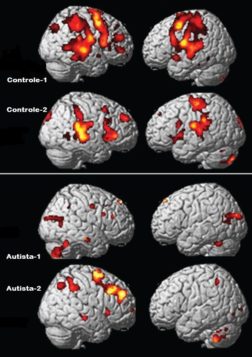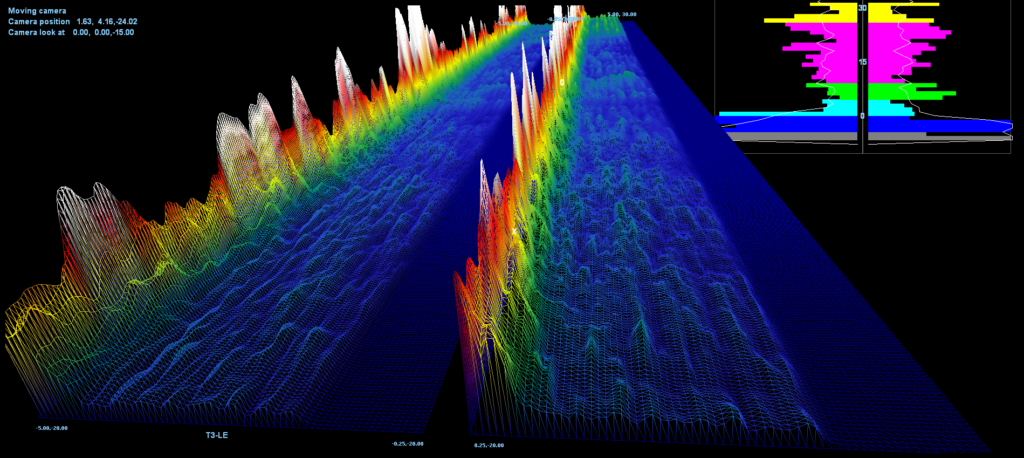Neurofeedback for Autistic Spectrum Disorders
A comprehensive approach with the help of the Alphalearning Brainwave System
Deploying frequencies directly into the brain – The Brainwave System III
Imagine being able to observe in real-time the dysfunctions in the bioelectric field of the brain of an autistic person.
Now imagine a device capable of deploying directly into the brain the frequencies required to achieve an emotional relationship, develop language skills, learn new knowledge, coordinate the body and accomplish all that was not possible before.
Alphalearning has perfected this equipment and this technique over the last 30 years. Below, we will detail its development for the autistic spectrum, uncovering its mechanisms and achievements.
- The first days – Pyotr and Sofie
- Neurofeedback, functional domains and emotional centre
- Human perspective and the relationship with other problems
- Returning to autism, functional domains and neurofeedback
- What happens in neurofeedback training, and how is it done?
- When do you notice any results?
- Why do children learn?
- Results of long-term brain training and neurofeedback
The first days – Pyotr and Sofie
The main applications were related to the improvement of people of high capacities and physically healthy, until the coming of Pyotr, a 17-year-old with partial paralysis on the right side. During his training with Brainwave, he presented nausea for 10 to 15 seconds, then became extremely relaxed. At the end of the 12-minute session, there were two surprises: he could balance perfectly on each foot and held tightly in his right hand. Nothing similar had occurred before.

Sofie was a 16-year-old girl with her left side paralyzed and her left arm convulsive from age two days due to lung collapse and oxygen loss to the right brain. She was in a wheelchair for 16 years. Her father had heard about Pyotr and wished to try the Brainwave with Sofie. This was in early 1993.
After the first 12-minute session, the convulsions in the left arm were well under control. Within a month, she was able to go in and out of the wheelchair alone. For the first time in 16 years, she could take herself to the toilet.
Over a year later positive side effects have been discovered in both cases – their physical and mental strengths continued to improve: Pyotr – IQ 75 up to 100, Sofie IQ 85 up to 135. It is also noticed that the same procedures were effective in a variety of other problems, including autism.
Studying these results, we developed a screening system that could ensure the success of the new techniques for all new cases accepted. Meanwhile, the scientific understanding of the brain and autism progressed, and the results achieved by Alphalearning were observed in terms of a comprehensive model.
By addressing behaviour at the level of the brain itself, neurofeedback and brain training are, in fact, opening up an entirely new terrain that does not fit comfortably either within the standard biomedical model or the standard mental health or behavioural model.
Neurofeedback for Autistic Spectrum Disorders: Functional domains and emotional center
Looking at from the perspective of brain behaviour, the most obvious shortcoming in autism lies at the level of integration of function. Moreover, this deficit is not uniform across functional domains but instead afflicts particularly the emotional core that allows us to function in socially connected ways.

From the perspective of brain behaviour, the most obvious shortcoming of autism lies at the level of integration of functional domains. Uneven across these fields, particularly afflicts the emotional core, one that allows us to act in socially connected ways. Additionally, there are also deficits in the functional connectivity that operates on this flawed architecture
Here we see the image of an experiment showing the coordinated activation in several brain centers (particularly in the frontal and temporal areas) in two people out of the autistic spectrum (top image), while in two autistic children (bottom) there is no integration between these centers. The greater activity in the cerebellum of autistic children is understood as a compensatory response; however, it adds a new dysfunction and stress to the brain.
This is where neurofeedback and brain training comes in. In this kind of training, we work to bring the neural network of emotional connectivity back online, among other things. We must necessarily operate within the limitations of what is available in terms of structural connectivity, but the good news is that emotional connectivity in the autistic child lies largely in the functional domain and is, therefore, clinically accessible to neurofeedback. There is, at present, essentially no other comparable means to bring this about.
Human perspective and the relationship with other problems – Reactive Attachment Disorder and Post-Traumatic Stress Disorder
In addition to adopting the “brain perspective” on autism, it is helpful also to adopt the child’s perspective for additional insights. What is the life experience of the autistic child who is not emotionally connected? We can gain insights into this by reflecting on other children who have severe attachment issues (often known by the term “Reactive Attachment Disorder”), those who may have been raised in Chinese, Russian, or Romanian orphanages without the benefit of early nurturing. Such children live in extreme states of raw fear. We derive our sense of safety in the world from our early social relationships. In the absence of these comforting social bonds, the experience of life can be uncertain, capricious, and even threatening. The lack of assuredness in navigating one’s world drives the nervous system toward heightened states of activation and arousal. The brain can never relax its vigilance because the child lacks the experience of a sense of safety. Even if the child presents as shut down, the internal state of that system is invariably one of high arousal—without apparent exception.
There is an even larger truth here. In the presence of various kinds of dysfunction, the brain will attempt to compensate by increasing activation generally and causing stress. The effect may, however, be counter-productive. In any event, it imposes costs. We know very well what happens when we try to function in a highly agitated state. Brain function suffers. The larger principle at issue here is that problems in functional connectivity are not merely consequences. They are also the cause of yet further dysfunction. This is best visualized by reference once again to another affliction, namely Post-Traumatic Stress Disorder (PTSD).

In this condition, there may be nothing in the causal chain beyond the witnessing of a highly traumatizing event. Yet the lingering physiological consequences can devastate the rest of that person’s life. In this case, we have no choice but to trace all these adverse consequences back to the original event, and all we have to work with is functional connectivity (which is demonstrably altered). There had been no physical injury, after all. Everything that occurred in that trauma experience lay in the functional domain at the outset. Very clearly, then, deficits in functional connectivity are quite sufficient to wreak all kinds of havoc with our physiology, and that is what also happens in the autistic spectrum.
Returning to autism, functional domains and neurofeedback
The significance of this observation is that by addressing functional connectivity in autism directly, we are not only helping with the consequences of other biomedical deficits, we are also remediating an important element in the causal chain of dysfunction in its own right. This helps to make the case that neurofeedback and brain training should be an early intervention in the autistic spectrum. Given what we now know, we believe that it should be the very first thing undertaken by any family whose child is suspected of starting to exhibit autistic features. Families already involved in other therapies should consider folding neurofeedback in early as a high priority.
What happens in neurofeedback training, and how is it done?
The traditional approach of Neurofeedback just characterizes the deviations in functional connectivity and targets those in training. The deviations are numerous, however, and one still needs a guiding principle to determine the appropriate order in which they should be addressed. And then one runs into the usual conundrum that some approaches help and others don’t.

In Alphalearning, we developed a different approach, one that starts from the observation already made above that the autistic child lives with an over-aroused nervous system, and that status does not do the child any favours. In this picture, the EEG of an autistic child confirms this by showing three important points: 1) a deep imbalance between the cerebral hemispheres (the right hemisphere has much more activity), 2) excessive activity of high frequencies in both hemispheres (green, pink and yellow horizontal bars), and finally, 3) characteristic of autism, extremely strong theta waves (horizontal bars in dark blue going out of the reading scale).
We find it most appropriate to move the child’s brain out of emergency mode as the first order of business. “Calm the stressed and agitated nervous system” is the operative principle. This can be done relatively straightforwardly with essentially any autistic child, irrespective of level of functionality or of age. This strategy finds additional support in our work with people with PTSD, with traumatic brain injury and with dyslexic children. All three of these classes of problems will be started with the very same neurofeedback and brain training approach because the initial objective is common to them all: it is to move the nervous system to a calmer and more controlled place.
The basic process follows these steps, always with the analysis of the EEG in real-time:
- Initially, we record an EEG while the child performs a 4-minute test that involves six different intellectual functions, which offers 24 different aspects of this EEG reading.
- After the analysis of this reading, we choose (or draw) an optical-acoustic stimulus program that will start the training itself for 12 minutes. This equipment implements certain frequencies directly into the brain.
- It is again performed the 4-minute test (step 1 above).
- Now, with three EEG readings available for analysis, we prepare activities to be done with the help of optical-acoustic stimulus. In some cases the activities will be of pure neurofeedback (computer games controlled by brain waves). In other cases, the activities will be the ones of the child’s day-to-day life.
When any result is noted?
Functional improvements are observed within the first 12 minutes, simply by virtue of this change of state in which the nervous system functions.

Understandably, the child most commonly starts out terrified of the novelty of neurofeedback and, at minimum, suspicious of the electrodes about to be attached to the scalp. However, almost as soon as the training gets underway, one can often see a kind of tranquillity settle on the child’s face and a certain composure descends over his body. The child may even become completely still, and some have been observed to shift to a meditative pose— all quite uncharacteristic of the child who was brought in by the parents just hours earlier.
Comparing the image above with the former, it is easy to see that the activity of the cerebral hemispheres has begun to come into balance. The reduction of stress between the hemispheres is a sine qua non condition for any progress that one wants to achieve. Unlike the usual neurofeedback where the person is expected to reach this state by itself – when the computer then offers a reward in some kind of game or sound – the Brainwave implements frequencies and the desired balance directly into the brain.
The child’s brain realizes that the information presented in training is important and leads to a better state. Because the brain is presented with this experience, he wants to remain in this state. The children who follow the computer screen will notice that the information presented on the screen in some way actually mirrors its own activity. It cannot help but be intrigued to see its own activity mirrored back to it in this fashion, and so it becomes engaged in the process. Once the brain is thus entrained into the experience, then, of course, the child readily goes along for the journey. One can even think of this as a guided meditation for the autistic brain. It clearly relishes the experience, and those dreaded electrodes are long forgotten by the child. With the practice of training, the brain will assimilate the new habits and functional improvements will continue to emerge while others are consolidated.
Why do children learn?
The optical-acoustic stimulus offered by Brainwave serves as an appeal to the mechanisms by which the brain keeps its own balance of timing and frequency. It takes the brain out of its undesirable state, invoking thus their own resources to the task of restoring the regulation. In this image, we have the EEG from the same child 15 days later

Neurofeedback is, therefore, a learning process by which the brain increases its native self-regulating skills.
In the image above, the EEG of the same child in previous images, but 15 days after the first session. Again, three points should be highlighted: 1) the balance between the hemispheres is much greater, 2) the high-frequency waves (green, pink and yellow horizontal bars) were reduced, and 3) Alpha waves (light blue horizontal bars) are already overcoming the theta waves (dark blue horizontal bar), making the child ready to receive information and learning from the outside world.
Some rewards reinforce to the brain that the new state must be learned:
- Relaxation and brain balance
After many months, often years, living with the brain in constant high activity and stress, for the first time, the child can reach, with the help of the Brainwave, a state of relaxation and balance. This reward is, per se, enough to promote learning. - Emotional Relationship
It is usual that after the first training session, offered the opportunity, the child presents an emotional relationship with their parents never presented before. We explained above that affect regulation is intimately coupled to stress regulation. Regulating the one influences the other and vice versa. In fact, we have chosen to target the emotional circuitry as the most direct way of training stress regulation, taking advantage of this relationship. - Progressive cerebral Stability
The brain becomes progressively more stable as new skills accumulate over the next training. In general, the child will deal with her life in a more peaceful and balanced way and it will be presented to her a full learning program to develop her new brain state and capabilities.
More specifically, this training can be very helpful for children whose autistic presentation is further complicated by a seizure disorder. In fact, epilepsy was the first clinical indication for which the efficacy of EEG feedback was proved in animal and human subject research, so the focus on seizure susceptibility is appropriate. The story is consistent throughout: moving the child to better-regulated states helps brain stability, and so does the renormalization of connectivity relationships. Control of seizures then may open the door for enhanced cognitive function. We will have kindled a virtuous cycle in which every specific advance also promotes the overall objective of enhanced functionality.
Long-term results through Neurofeedback for Autistic Spectrum Disorders
If everything goes as expected, the agenda organized by Alphalearning gradually proliferates in terms of targeting and progresses on many fronts. Reading and Math skills join athletic and artistic abilities offering a range of possibilities for the child’s emotional development. Every feature of the autistic behavioural presentation can be selectively targeted one after another. This is typically done in an order that emulates our original developmental sequence.
At this point, the family already have a good deal of knowledge to keep the training at home with their own Brainwave, with ongoing remote supervision from Alphalearning International. There is no obvious endpoint to the training, as the increasingly competent brain just continues to develop new competencies. Somehow, our society needs to ensure that every autistic child has the opportunity to expand his mental horizons with neurofeedback.
Finishing
In addition to the entry of the autistic child into a world of emotional relationships and the reduction or elimination of several other symptoms related to the autism spectrum, a number of other demands can be achieved with brain training and neurofeedback. Problems related to the functioning and brain self-regulation, such as the solution of dyslexia and ADHD, increased academic or artistic performance, solutions to the disorders resulting from problems at birth, and Fibromyalgia can be corrected within days or weeks, although the permanence of training guided by Alphalearning should last for longer.
After the course, the customer relies on the ongoing remote supervision from Alphalearning International for as long as necessary to master EEG readings and operate with confidence the neurofeedback and optical-acoustic stimulus software. In addition, an agenda that fully develops a child (autistic or not) will take years of your life, and we are keen to monitor the implementation of these goals.
Please contact us and schedule an interview to answer your questions and schedule your course.
Assessment-Guided Neurofeedback for Autistic Spectrum Disorder
Neurofeedback Improves Executive Functioning in Children with Autism Spectrum Disorders
Long-term effects of neurofeedback treatment in autism
